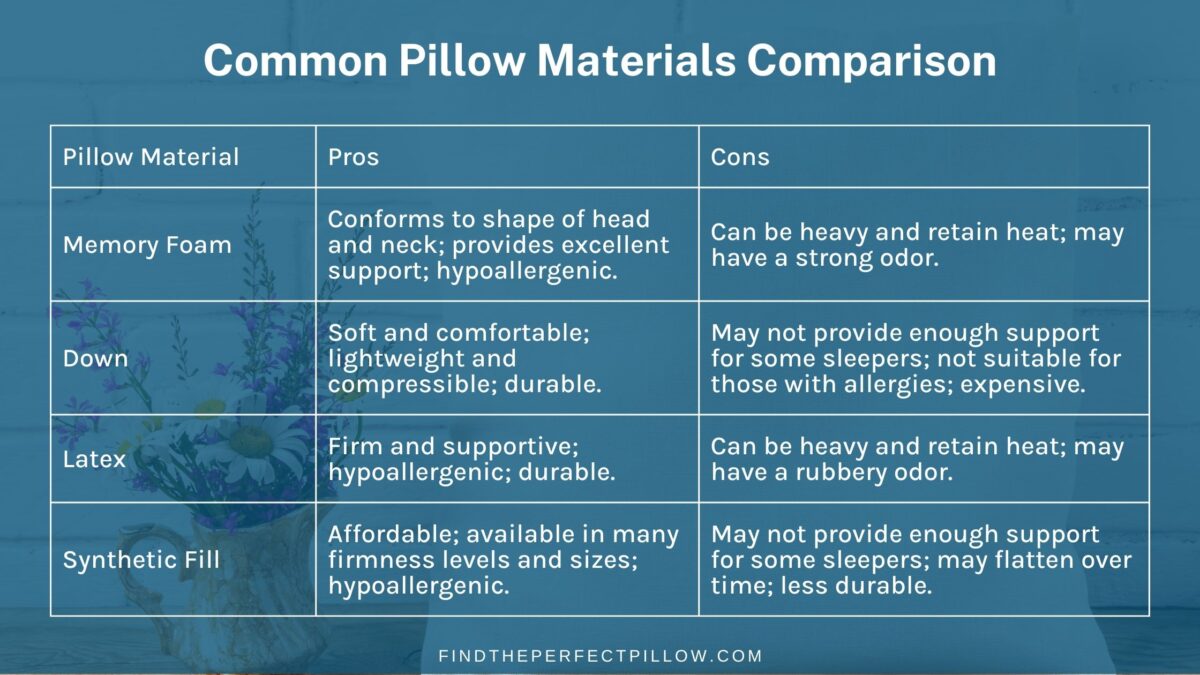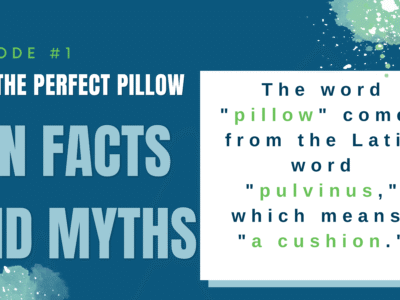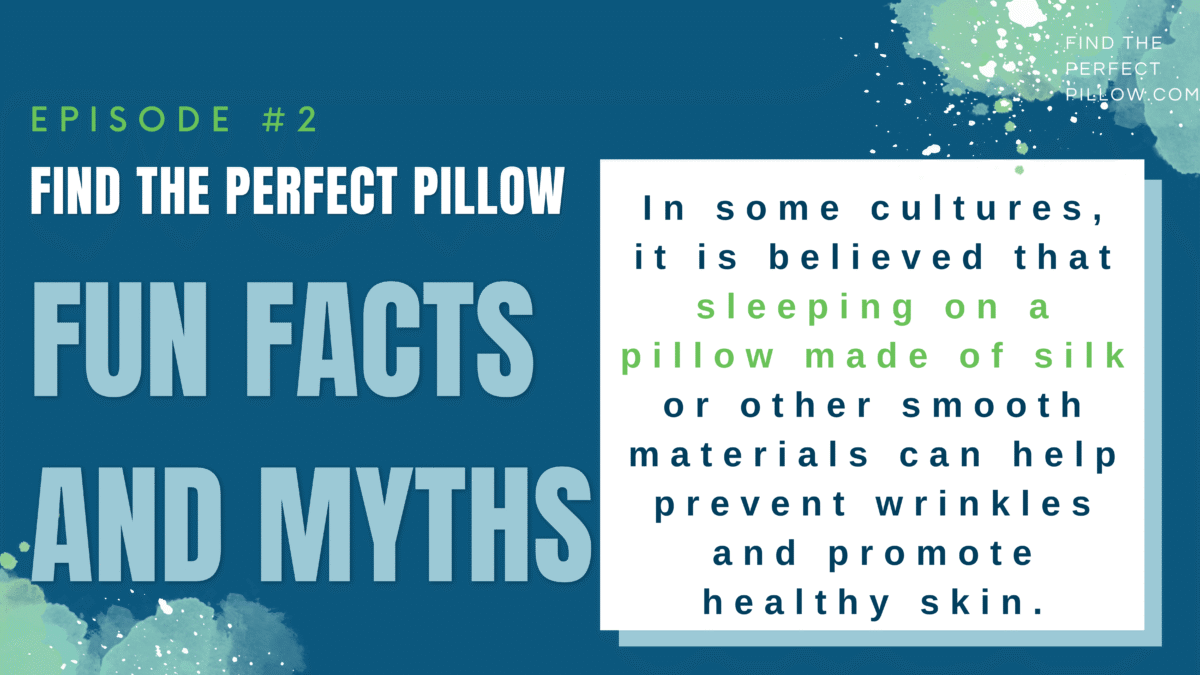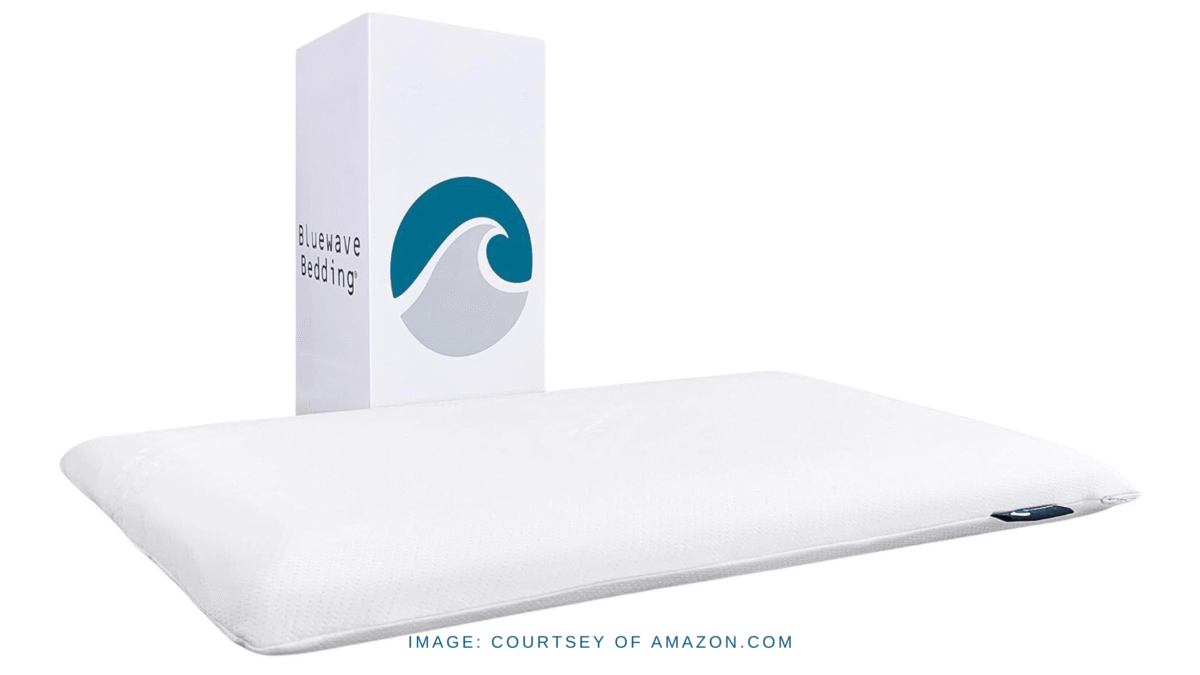Pillows are an essential part of a good night’s sleep, and choosing the right pillow material is crucial. There are a variety of pillow materials available, each with its own unique features and benefits. From memory foam to down to latex to synthetic fills, it’s important to understand the differences between them to make an informed decision for a comfortable and restful sleep. In this guide, we’ll take a closer look at the various materials used in pillow construction to help you select the right pillow for your sleeping needs.
Memory Foam Pillows
Memory foam pillows are a popular choice because of their ability to conform to the shape of your head and neck, providing excellent support for a comfortable sleep. Moreover, Memory foam is a viscoelastic material that contours to your body, relieving pressure points, and reducing neck pain. Furthermore, Memory foam pillows are also hypoallergenic, making them ideal for allergy sufferers.
Pros:
- Provides excellent support by contouring to the shape of your head and neck
- Hypoallergenic and resistant to dust mites
- Alleviates pressure points and reduces neck pain
Cons:
- Can retain heat and feel too warm for some sleepers
- May have a strong odor when first opened
- Can be heavy and difficult to adjust
Down Pillows
Down pillows are made from the soft, fluffy undercoating of ducks or geese and are a luxurious option for a comfortable sleep. They are light, fluffy, and provide a cloud-like feeling of comfort and support. Also, Down pillows are also highly compressible, making them easy to fluff and adjust.
Pros:
- Soft and comfortable, providing a luxurious feel
- Lightweight and highly compressible, making them easy to adjust
- Durable and long-lasting
Cons:
- May not provide enough support for some sleepers
- May not be suitable for those with allergies
- Can be expensive
Latex Pillows
Latex pillows are made from natural or synthetic latex foam and provide a firm and supportive sleeping surface. They’re ideal for those who need a firmer pillow and want a more natural sleeping material. Latex pillows are hypoallergenic, making them ideal for allergy sufferers.
Pros:
- Firm and supportive, providing a more natural sleeping material
- Hypoallergenic and resistant to dust mites
- Durable and long-lasting
Cons:
- Can be heavy and difficult to adjust
- May have a rubbery odor
- Can retain heat and feel too warm for some sleepers
Synthetic Fill Pillows
Synthetic fill pillows are made from materials such as polyester, microfiber, or gel-infused fibers. They are an affordable option that is available in a wide range of firmness levels and sizes. Synthetic fill pillows are hypoallergenic and easy to care for, making them ideal for those with allergies.
Pros:
- Affordable and available in a wide range of firmness levels and sizes
- Hypoallergenic and easy to care for
- Lightweight and easy to adjust
Cons:
- May not provide enough support for some sleepers
- May flatten over time and require frequent fluffing
- May not be as durable as other materials

Conclusion
By considering the pros and cons of each pillow material, you can make an informed decision about which material is best suited for your sleeping habits and preferences. Remember to take into account any specific needs you may have, such as support for a specific body part or relief from a medical condition.






